

|
 |
Zero Boys (The) (Blu-ray)
[Blu-ray]
Blu-ray ALL - United Kingdom - Arrow Films Review written by and copyright: Paul Lewis (25th April 2016). |
|
The Film
 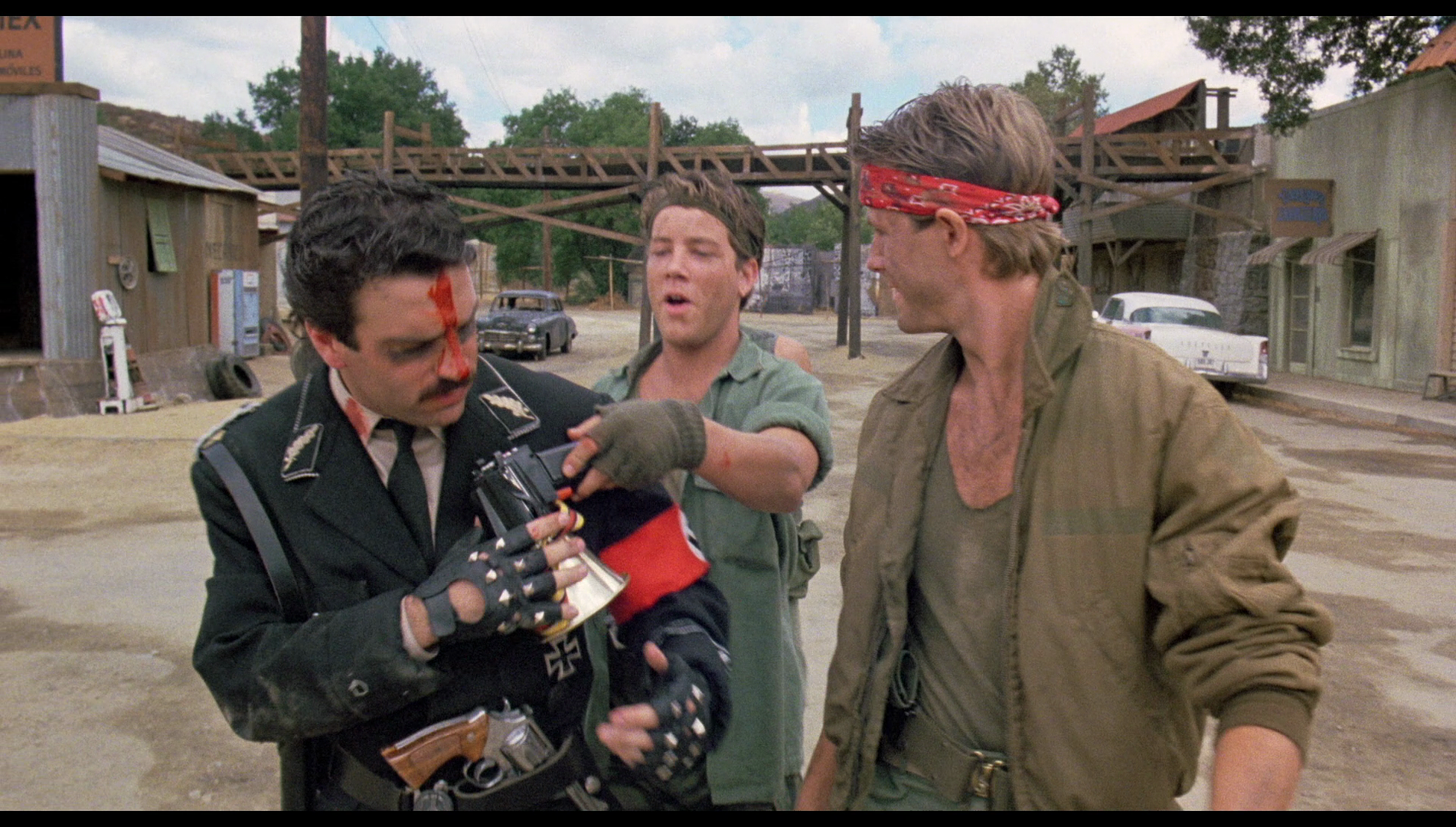 The Zero Boys (Nico Mastorakis, 1986) The Zero Boys (Nico Mastorakis, 1986)
Structured like a ‘backwoods’ bodycount/slasher film, with the overt indebtedness to John Boorman’s Deliverance (1972) that many such ‘backwoods’ bodycount films demonstrate, Nico Mastorakis’ The Zero Boys (1986) offers an unusual confusion of the conventions of the bodycount picture with the trend in action movies that dominated Hollywood cinema during the 1980s. The film begins during a wargame at the Weekend Warriors Survival Games site. The Zero Boys – a seemingly unbeaten team of young men, comprising friends Steve (Daniel Hirsch), Larry (Tom Shell) and Rip (Jared Moses) – are pitted against Casey (John Michaels). When Steve and his friends win, Steve cajoles Casey into declaring for the watching audience ‘The Zero Boys are the best’ and allowing Steve to take Casey’s ‘girl’, Jamie (Kelli Maroney), for the weekend.  Traveling to the woods in their Jeep with Rip’s girlfriend Sue (Nicole Rio) and Larry’s lover Trish (Crystal Carson), Steve and the others soon find their planned picnic interrupted by the distant scream of a young woman. The group explore and find a seemingly abandoned house in the woods. They decide to stay for a while, lighting the fire. As night descends, mysterious noises are heard outside the house. Whilst she and Larry use one of the bedrooms for a ‘quickie’, Trish sees someone watching them from a hatch leading into the roofspace of the house. Investigating outside, Jamie and Steve discover human bones near the house. The Zero Boys reveal that the submachine guns used in the wargames are modified to fire real bullets, and they break out these weapons with the aim of using them for defence. In a nearby barn, Rip and Larry discover a chair modified apparently modified to be used to restrain and torture a person, with a videocamera and connected monitor pointed towards it. Traveling to the woods in their Jeep with Rip’s girlfriend Sue (Nicole Rio) and Larry’s lover Trish (Crystal Carson), Steve and the others soon find their planned picnic interrupted by the distant scream of a young woman. The group explore and find a seemingly abandoned house in the woods. They decide to stay for a while, lighting the fire. As night descends, mysterious noises are heard outside the house. Whilst she and Larry use one of the bedrooms for a ‘quickie’, Trish sees someone watching them from a hatch leading into the roofspace of the house. Investigating outside, Jamie and Steve discover human bones near the house. The Zero Boys reveal that the submachine guns used in the wargames are modified to fire real bullets, and they break out these weapons with the aim of using them for defence. In a nearby barn, Rip and Larry discover a chair modified apparently modified to be used to restrain and torture a person, with a videocamera and connected monitor pointed towards it.
As Steve, Rip and Larry investigate the barn, Jamie, Sue and Trish remain within the house. The young women soon discover the corpse of a woman stashed in a trunk, their cries calling the men back to the house. Retreating to the bathroom, Trish is attacked and abducted. From a distance, the others see Trish being dragged into the barn. Finding the barn door locked, Steve and the others watch helplessly as Trish seems to be suffocated with a plastic bag under the gaze of the video camera. When they finally manage to get into the barn, the Zero Boys discover that Trish has disappeared. After Larry and Steve use their machine guns to destroy the video camera and monitor in the barn, they retreat to the house, where Trish is dropped from a hatch leading to the roof space. Trish is shaken up but, thankfully, still alive. The group try to escape through the woods, but find themselves pursued by two mysterious men – one of whom is armed with a machete, the other with a crossbow – who are only seen in silhouette. 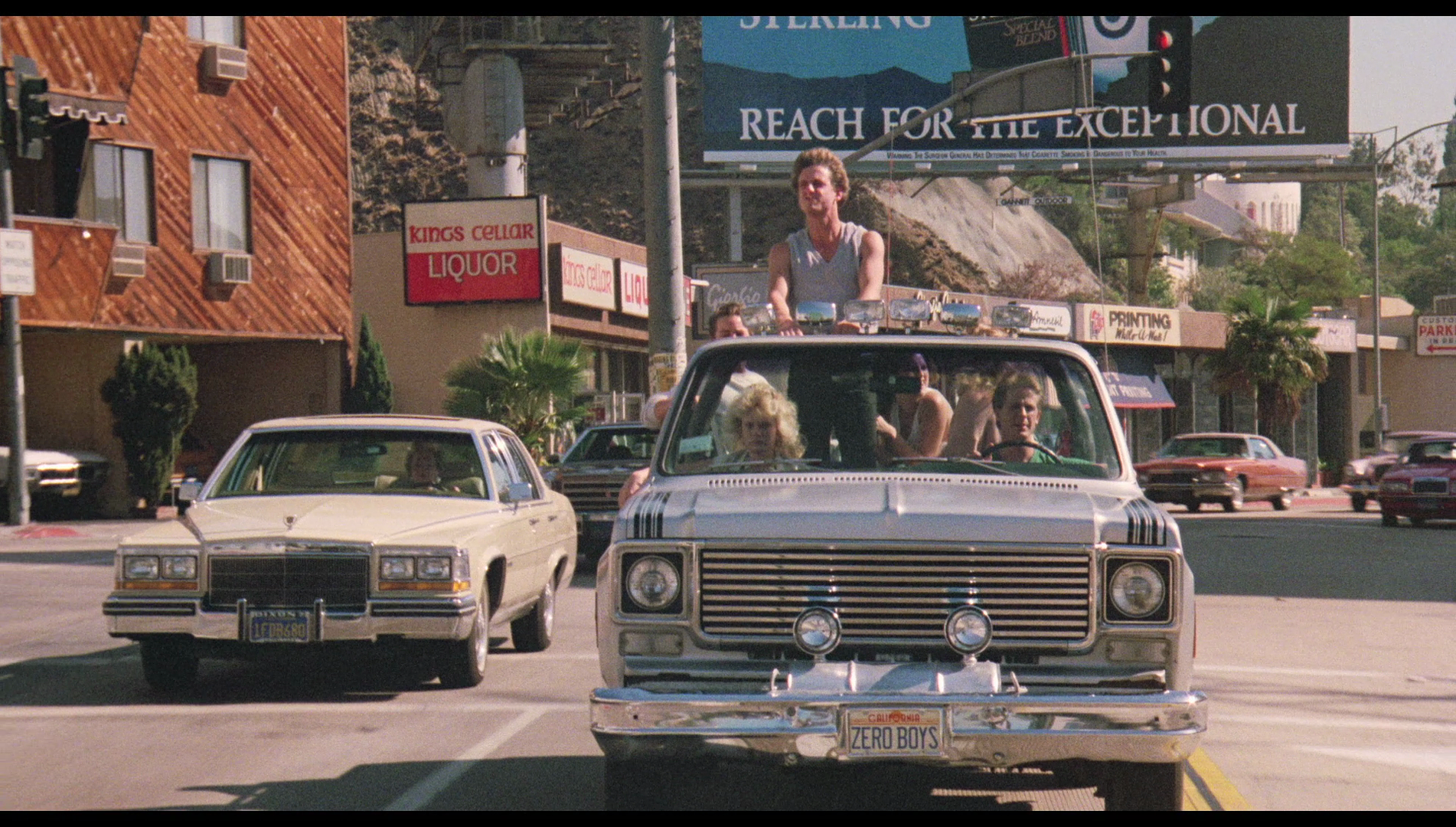 Victorian literature often focused on the contrast between the urban space and the rural environment, with the former depicted as a place of progress and enlightenment, and the latter dominated by enclaves of superstition and both moral and cultural stagnation. When Sherlock Holmes, for example, takes a case in the countryside (‘The Adventures of the Solitary Cyclist’, in Conan Doyle’s The Return of Sherlock Holmes), he finds a space dominated by superstitious beliefs, pubs where local gossip and fisticuffs go hand-in-hand, and defrocked priests reside over forced marriages. In the novel The Hound of the Baskervilles, Holmes and Watson investigate the infamous case of the spectral hound on the moors, which they reveal to be an example of trickery that manipulates the superstitious character of rural communities. British horror films of the 1960s and 1970s continued to propagate these Victorian ideas about the countryside: it’s a paradigm that underpins many of Hammer’s horror films (John Gilling’s The Plague of the Zombies, 1966, finds educated doctors from the city investigating voodoo in the Cornish countryside) and even British horror pictures of the 1970s (Sergeant Howie’s visit to Summerisle in Robin Hardy’s The Wicker Man, 1973, leads to a collision of the Christian faith with rural Pagan beliefs). In the 1970s, this structuring dualism of British genre fiction found its corollary in American films such as Deliverance, directed by a British filmmaker (Boorman) from an American novel (by James Dickey), and featuring a group of ‘city slickers’ (Burt Reynolds, Ronny Cox, Ned Beatty and Jon Voight) who find themselves pursued by ‘rednecks’, coded unsubtly as inbred and vicious, on their canoeing trip to rural Georgia. (Sam Peckinpah’s Straw Dogs, also released in 1972, offered a similar structuring opposition, with Dustin Hoffman’s American mathematician traveling to the Cornish village of St Buryan, where he finds himself the target of the local yokels.) Victorian literature often focused on the contrast between the urban space and the rural environment, with the former depicted as a place of progress and enlightenment, and the latter dominated by enclaves of superstition and both moral and cultural stagnation. When Sherlock Holmes, for example, takes a case in the countryside (‘The Adventures of the Solitary Cyclist’, in Conan Doyle’s The Return of Sherlock Holmes), he finds a space dominated by superstitious beliefs, pubs where local gossip and fisticuffs go hand-in-hand, and defrocked priests reside over forced marriages. In the novel The Hound of the Baskervilles, Holmes and Watson investigate the infamous case of the spectral hound on the moors, which they reveal to be an example of trickery that manipulates the superstitious character of rural communities. British horror films of the 1960s and 1970s continued to propagate these Victorian ideas about the countryside: it’s a paradigm that underpins many of Hammer’s horror films (John Gilling’s The Plague of the Zombies, 1966, finds educated doctors from the city investigating voodoo in the Cornish countryside) and even British horror pictures of the 1970s (Sergeant Howie’s visit to Summerisle in Robin Hardy’s The Wicker Man, 1973, leads to a collision of the Christian faith with rural Pagan beliefs). In the 1970s, this structuring dualism of British genre fiction found its corollary in American films such as Deliverance, directed by a British filmmaker (Boorman) from an American novel (by James Dickey), and featuring a group of ‘city slickers’ (Burt Reynolds, Ronny Cox, Ned Beatty and Jon Voight) who find themselves pursued by ‘rednecks’, coded unsubtly as inbred and vicious, on their canoeing trip to rural Georgia. (Sam Peckinpah’s Straw Dogs, also released in 1972, offered a similar structuring opposition, with Dustin Hoffman’s American mathematician traveling to the Cornish village of St Buryan, where he finds himself the target of the local yokels.)
 Elements of Deliverance’s narrative were repeated throughout a number of the early/prototypical bodycount/‘slasher’ films, including Tobe Hooper’s The Texas Chain Saw Massacre (1974), in which a group of young people are terrorised by cannibals whilst traveling through rural Texas, and Wes Craven’s The Hills Have Eyes (1977), in which (erm) a group of young people are terrorised by cannibals whilst traveling through the Nevada desert. These films consolidated a representation of rural America as a place of violence, inbreeding and extreme cruelty. Later examples of the ‘backwoods’ bodycount film – such as Jeff Liebermann’s Just Before Dawn (1981), Rituals (Peter Carter, 1977), The Prey , Hunter’s Blood (Robert C Hughes, 1986), Madman (Joe Giannone, 1981) and The Final Terror (Andrew Davis, 1983) - would explore this further, leading to a fairly fixed set of narrative conventions for these types of films that have been ripe for postmodern parody and pastiche in more recent pictures such as Tucker and Dale vs. Evil (Eli Craig, 2010) and Wrong Turn (Rob Schmidt, 2003). Elements of Deliverance’s narrative were repeated throughout a number of the early/prototypical bodycount/‘slasher’ films, including Tobe Hooper’s The Texas Chain Saw Massacre (1974), in which a group of young people are terrorised by cannibals whilst traveling through rural Texas, and Wes Craven’s The Hills Have Eyes (1977), in which (erm) a group of young people are terrorised by cannibals whilst traveling through the Nevada desert. These films consolidated a representation of rural America as a place of violence, inbreeding and extreme cruelty. Later examples of the ‘backwoods’ bodycount film – such as Jeff Liebermann’s Just Before Dawn (1981), Rituals (Peter Carter, 1977), The Prey , Hunter’s Blood (Robert C Hughes, 1986), Madman (Joe Giannone, 1981) and The Final Terror (Andrew Davis, 1983) - would explore this further, leading to a fairly fixed set of narrative conventions for these types of films that have been ripe for postmodern parody and pastiche in more recent pictures such as Tucker and Dale vs. Evil (Eli Craig, 2010) and Wrong Turn (Rob Schmidt, 2003).
The Zero Boys differs from many of these films, which usually feature poorly-armed city folks set against shotgun and blade-wielding locals, by arming its protagonists to the teeth: the titular ‘Zero Boys’ make their journey into the woods armed with submachine guns that have been modified to fire real bullets. Within this context, there’s very little threat from the crossbow and machete-wielding rural killers. The threat is predominantly directed against the womenfolk (Jamie, Sue and Trish), from whom the men (stupidly) separate themselves on a number of occasions, one of which results in Trish being dragged into the barn and almost suffocated with a clear plastic bag. 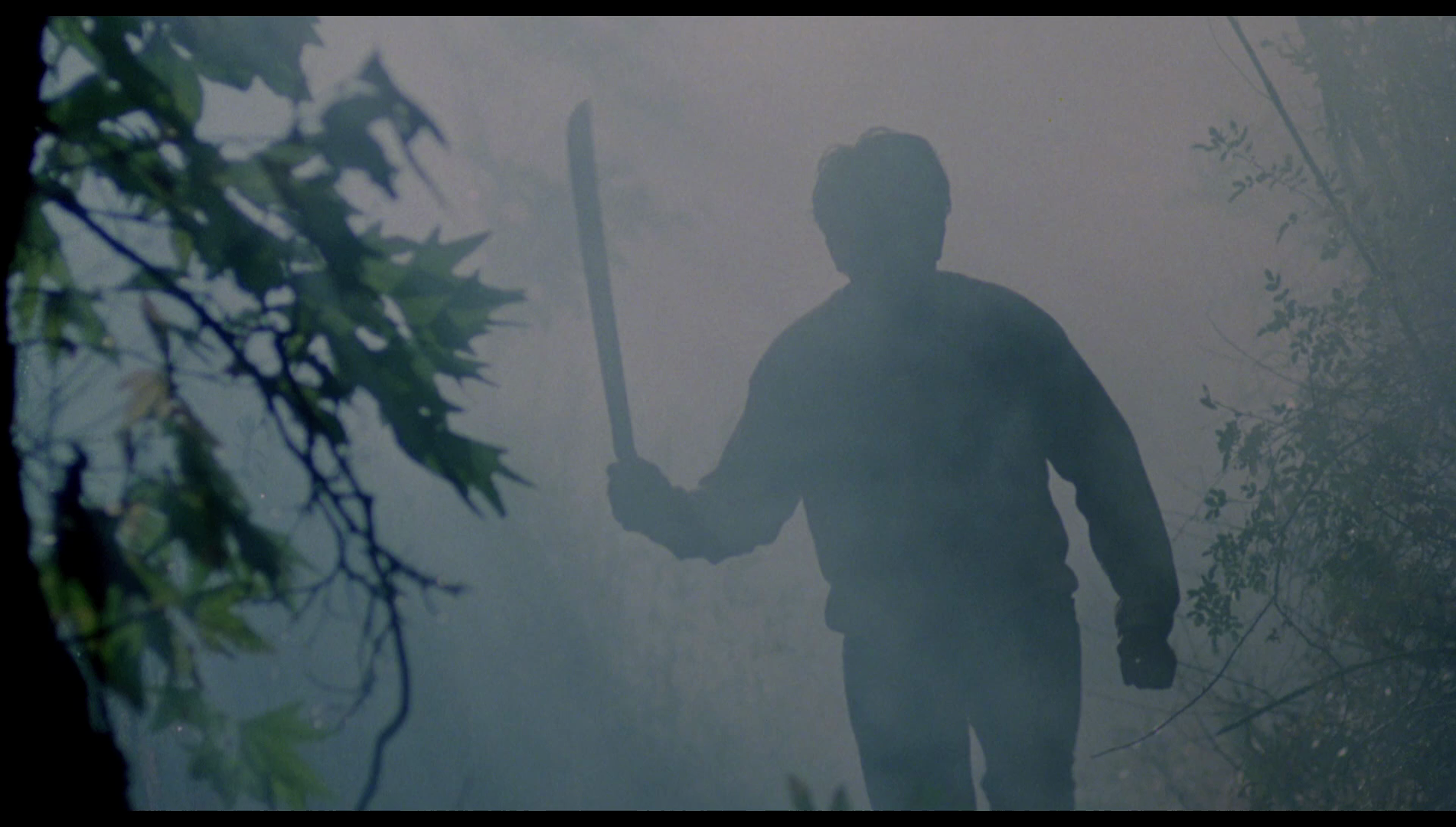 To some extent, the narrative feels very disjointed, like a film of two separate halves. The antagonism between the Zero Boys and Casey is established early on during the wargames, and a casual viewer might be forgiven for thinking that this will continue throughout the film or that Casey will make an appearance later in the story; however, as the Zero Boys move from the city to the countryside, their conflict with Casey is all but forgotten (other than the remaining presence of Jamie) and entirely new conflicts are established between the Zero Boys and the unseen locals. To some extent, the narrative feels very disjointed, like a film of two separate halves. The antagonism between the Zero Boys and Casey is established early on during the wargames, and a casual viewer might be forgiven for thinking that this will continue throughout the film or that Casey will make an appearance later in the story; however, as the Zero Boys move from the city to the countryside, their conflict with Casey is all but forgotten (other than the remaining presence of Jamie) and entirely new conflicts are established between the Zero Boys and the unseen locals.
Underscoring the juvenile nature of the protagonists, throughout the film there are a number of crude jokes made by them about sex and sexuality. Hearing the scream of a young woman which interrupts the Zero Boys’ picnic in the woods, one of the group quips that ‘Somebody’s probably just raping Mother Nature again’. Later, as the group try to escape from the house and are caught in the rain, Trish complains, ‘Hey, I’m getting wet’. ‘Yeah, Trish, that’d be nice for a change’, Larry quips quickly. The group’s adolescent nature is also reinforced by their decision to remain in the house, taking its comforts for granted, Larry and Trish even going so far as to fuck in one of the beds. The characters even acknowledge this, with Jamie asking Steve ‘Why are you so uncomfortable?’ ‘Because we’re trespassing’, is Steve’s response, ‘How would you feel if you came home and found somebody in your bed?’ ‘Lucky’, Jamie asserts before suggesting that the house probably belongs to ‘a bunch of faggots living out in the woods’. Shortly afterwards, the moral qualities of the Zero Boys are also questioned by Jamie’s suggestion that they are ‘all soon to be yuppies’. (‘I’m the exception’, Steve suggests in response to this, ‘I’ll probably end up a “yuffie” [….] “Young Urban Fuck-up”’.)  Many of the film’s moments of humour also allude to Hollywood conventions: for example, Steve’s pinning of a still from Rambo: First Blood, Part II (George P Cosmatos, 1985) to a wall during the opening wargames (and his line, ‘Eat your heart out, Sly’), Steve’s final victory over Casey (Steve fires his gun at Casey whilst mimicking Stallone’s distinctive snarl/yell, a rag tied around his head like the John Rambo character) and various offhand lines of dialogue (‘Hail to the Mad Max’, Jamie declares upon Steve’s humiliation of Casey at the end of the wargame). The cumulative effect is of a film that is very self-aware and deliberately reflexive in terms of its channeling of genre conventions. (This self-aware quality also seems to be enhanced through the film’s very obvious use of the same house and locations, on the Veluzat Movie Ranch, that were used in Steve Miner’s Friday the 13th, Part III, 1982.) Many of the film’s moments of humour also allude to Hollywood conventions: for example, Steve’s pinning of a still from Rambo: First Blood, Part II (George P Cosmatos, 1985) to a wall during the opening wargames (and his line, ‘Eat your heart out, Sly’), Steve’s final victory over Casey (Steve fires his gun at Casey whilst mimicking Stallone’s distinctive snarl/yell, a rag tied around his head like the John Rambo character) and various offhand lines of dialogue (‘Hail to the Mad Max’, Jamie declares upon Steve’s humiliation of Casey at the end of the wargame). The cumulative effect is of a film that is very self-aware and deliberately reflexive in terms of its channeling of genre conventions. (This self-aware quality also seems to be enhanced through the film’s very obvious use of the same house and locations, on the Veluzat Movie Ranch, that were used in Steve Miner’s Friday the 13th, Part III, 1982.)
The film begins ominously, with a black screen and the sound of rushing wind interrupted by the voice of Steve declaring ‘This is the plan: we either get Casey or we’re history’. The wargames at the start of the film foreground the idea that the Zero Boys’ experience of violence is, to this point in their lives, wholly mediated through the imagery of Hollywood films. The game that pits the Zero Boys against Casey offers a strange, almost surreal mishmash of imagery from various Hollywood genres: the Second World War movie (Casey is dressed in the garb of an officer of the SS), the Western (Rip is dressed as a cowboy) and the Vietnam war picture (Steve is introduced pinning a black-and-white still frame from Rambo: First Blood, Part II, 1985, to a wall and declares ‘Eat your heart out, Sly’). The suggestion is that the imagery of these very real sites of conflict has become confused within the minds of these media savvy young men and transformed into a big ‘mash-up’ that is ripe material for games playing. For Casey and his crew, war is a simulacrum that can be mined for imagery used in play.  The wargames are juxtaposed with the ‘real’ (within the story) violence enacted in the second half of the film, as the Zero Boys come into conflict with the rednecks who – in a plot twist that reinforces the theme of mediated violence and its effects – are involved in the production of ‘snuff’ movies. (The involvement of the killers in making such films using a home video camera seems very much ‘of the moment’ of its production, given similar revelations about the activities of Leonard Lake and Charles Ng following their capture in 1985.) A number of times, the juxtaposition of the ‘play’ violence of the wargames and the ‘real’ violence of the sequences set in the woods is foregrounded in the dialogue: ‘It’s not a game anymore’, Steve reminds Rip as they investigate the barn where the ‘snuff’ films have been made, ‘Be careful’. When they realise that the screams that they heard seem to be sourced from a videotaped recording that is playing back on the monitor in the barn, Steve suggests that ‘Someone’s playing games with us’. Larry refuses to believe that what he’s seeing on the tape is ‘real’, telling Steve ‘It’s just a tape. We don’t know that’s real. It could be bullshit’. When the group attempt to flee through the woods, they discover traps set for them by the killers which, once again, allude to the conventions of the war films used as the basis for the wargames in the opening sequence (for example, Viet Cong-style Punji stake pit) – but here, in stark comparison to the film’s opening wargames, the consequences are far more deadly. The wargames are juxtaposed with the ‘real’ (within the story) violence enacted in the second half of the film, as the Zero Boys come into conflict with the rednecks who – in a plot twist that reinforces the theme of mediated violence and its effects – are involved in the production of ‘snuff’ movies. (The involvement of the killers in making such films using a home video camera seems very much ‘of the moment’ of its production, given similar revelations about the activities of Leonard Lake and Charles Ng following their capture in 1985.) A number of times, the juxtaposition of the ‘play’ violence of the wargames and the ‘real’ violence of the sequences set in the woods is foregrounded in the dialogue: ‘It’s not a game anymore’, Steve reminds Rip as they investigate the barn where the ‘snuff’ films have been made, ‘Be careful’. When they realise that the screams that they heard seem to be sourced from a videotaped recording that is playing back on the monitor in the barn, Steve suggests that ‘Someone’s playing games with us’. Larry refuses to believe that what he’s seeing on the tape is ‘real’, telling Steve ‘It’s just a tape. We don’t know that’s real. It could be bullshit’. When the group attempt to flee through the woods, they discover traps set for them by the killers which, once again, allude to the conventions of the war films used as the basis for the wargames in the opening sequence (for example, Viet Cong-style Punji stake pit) – but here, in stark comparison to the film’s opening wargames, the consequences are far more deadly.
The ‘turning point’ in terms of the transition from the world of mediated violence to ‘real’ violence seems to come when Steve and Larry, in a moment of overkill that is captured in slow-motion, use their submachine guns to destroy the video camera, monitor and the other paraphernalia used in the making of the ‘snuff’ films. It’s a scene that screams symbolism and is reminiscent of similar moments in Sam Peckinpah’s final film, The Osterman Weekend (1983), a film that also engages with the theme of video and surveillance. The Zero Boys also replays the memorable moment in The Osterman Weekend in which what appears to be the severed head of a family’s dog is found in a refrigerator. In The Zero Boys, Sue opens the icebox of the refrigerator in the house and discovers within it the severed head of a woman. (In Peckinpah’s film, the dog’s head is revealed to be fake, part of the movie’s almost Brechtian engagement with the artifice of the video age; the head in The Zero Boys is, we may presume, intended to be ‘real’, but very little is made of its discovery which seems to serve little purpose other than to offer a jump scare.) 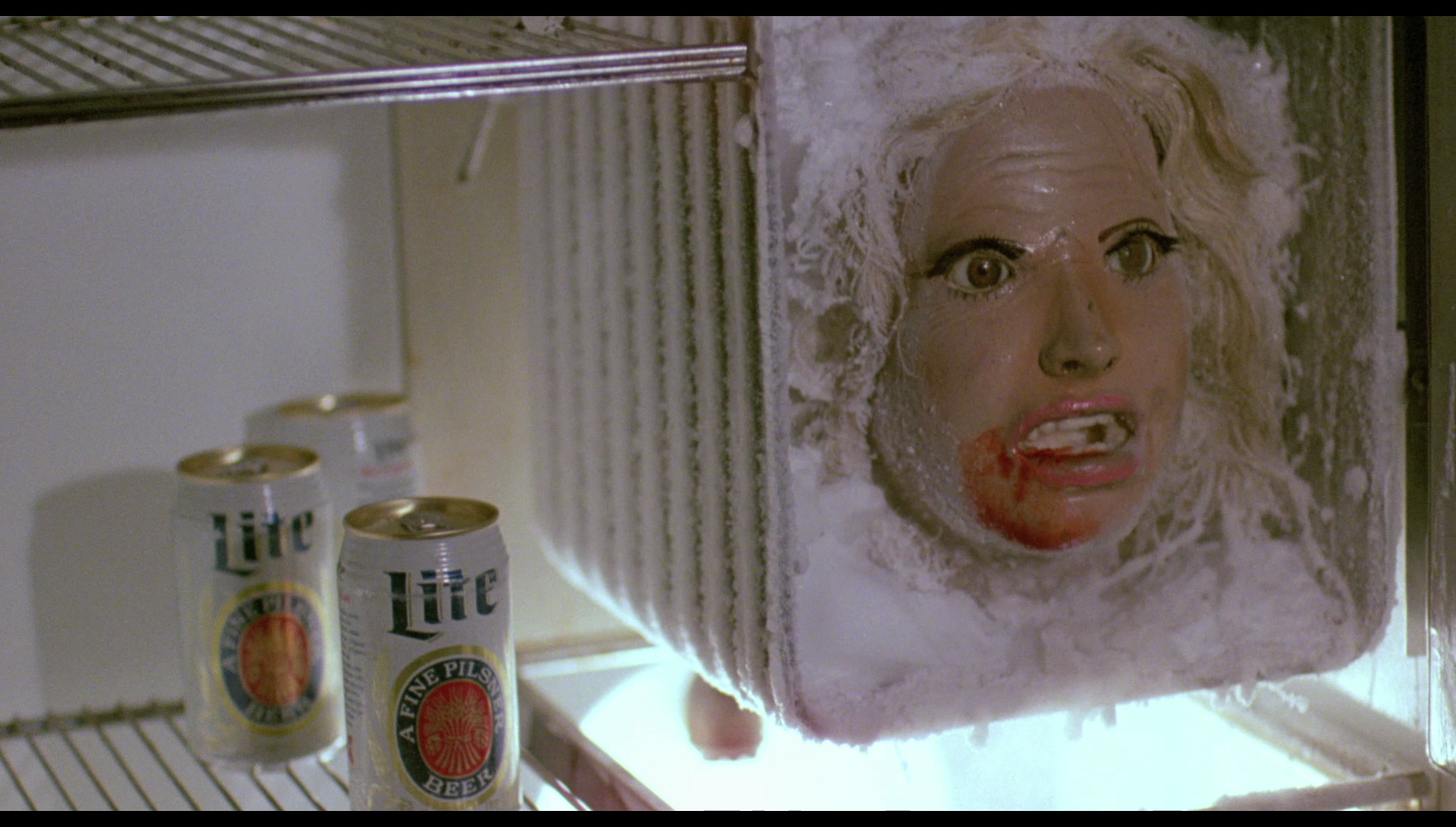 Casey’s failure leads to him relinquishing his ‘trophy’, Jamie. For her part, throughout the film Jamie verbally resists being objectified – protesting that she isn’t a possession to be transferred from Casey to Steve – though this is to some extent mitigated by how she’s represented within the film. (‘I’m five-six, love tennis, and I fuck on the first date’, she tells Steve a little later in the narrative.) Nevertheless, Jamie’s status as an ‘outsider’ to the group gives her an objectivity which allows her to act as a voice for the audience’s potential reactions to the Zero Boys’ attitudes. When Steve and the others reveal that the guns they have been carrying, and which they use in the wargames, have been modified to also fire real bullets, Jamie reacts with disbelief, calling Steve and his friends ‘a bunch of Nazi lunatics’. Casey’s failure leads to him relinquishing his ‘trophy’, Jamie. For her part, throughout the film Jamie verbally resists being objectified – protesting that she isn’t a possession to be transferred from Casey to Steve – though this is to some extent mitigated by how she’s represented within the film. (‘I’m five-six, love tennis, and I fuck on the first date’, she tells Steve a little later in the narrative.) Nevertheless, Jamie’s status as an ‘outsider’ to the group gives her an objectivity which allows her to act as a voice for the audience’s potential reactions to the Zero Boys’ attitudes. When Steve and the others reveal that the guns they have been carrying, and which they use in the wargames, have been modified to also fire real bullets, Jamie reacts with disbelief, calling Steve and his friends ‘a bunch of Nazi lunatics’.
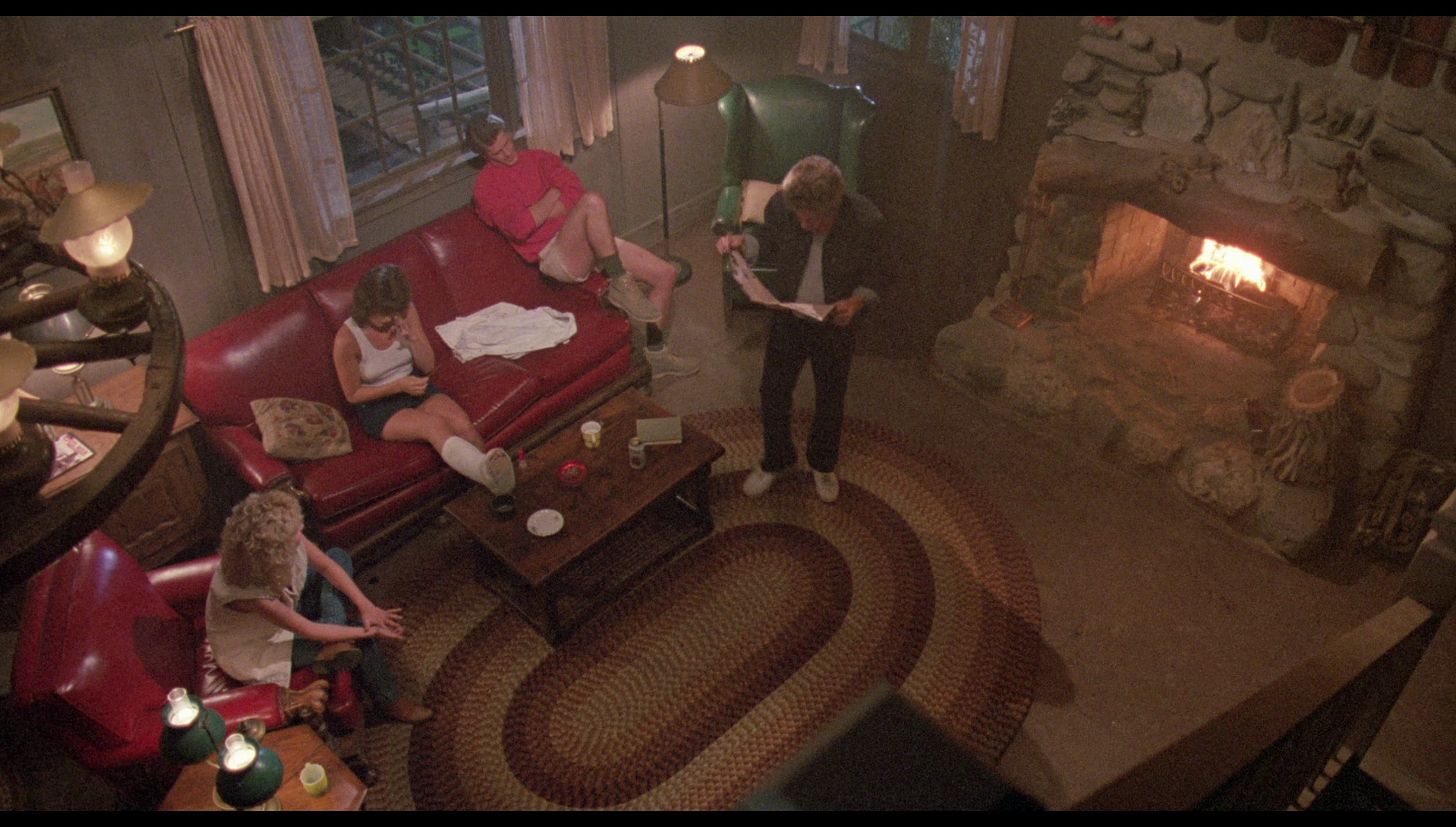 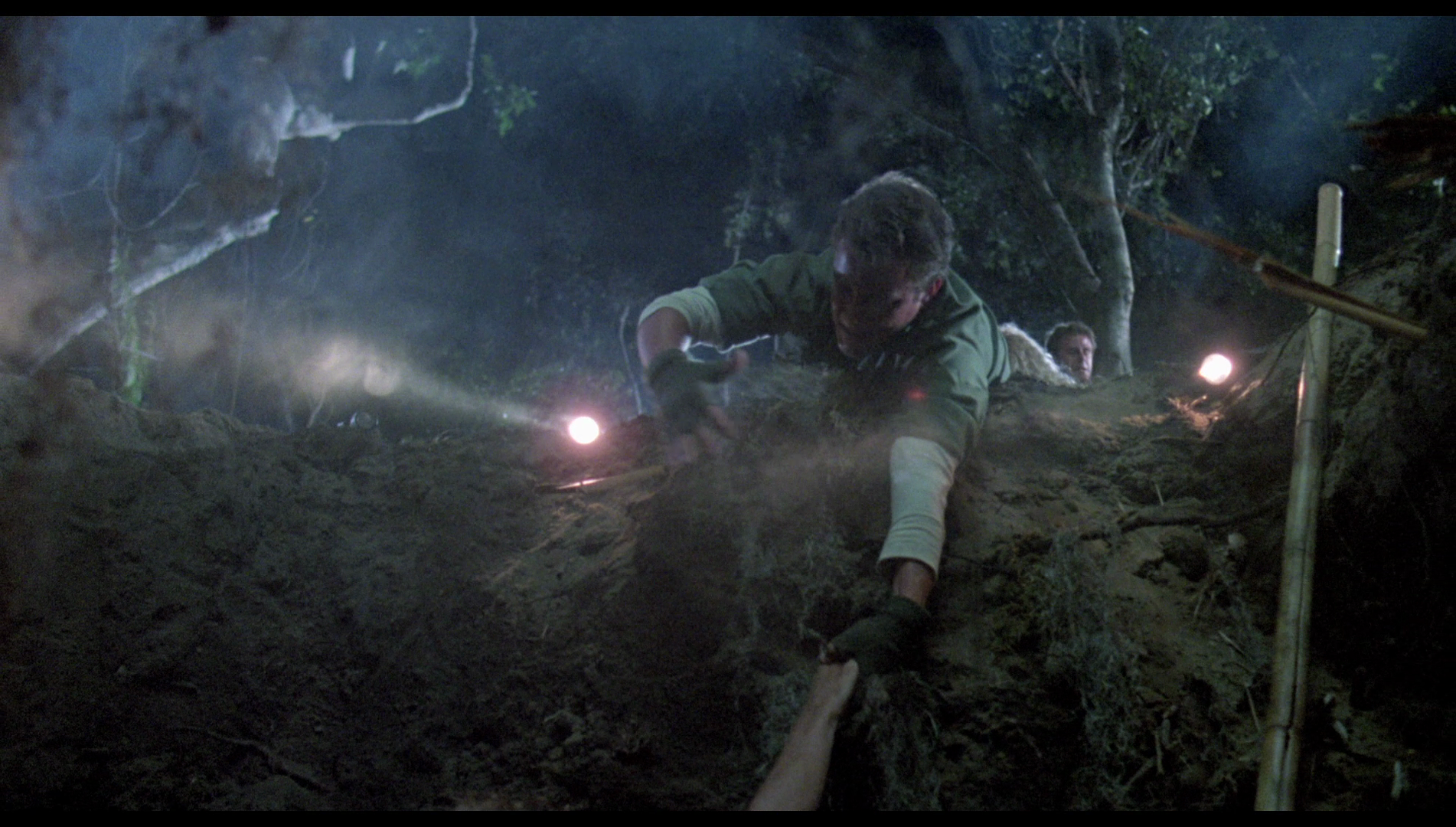 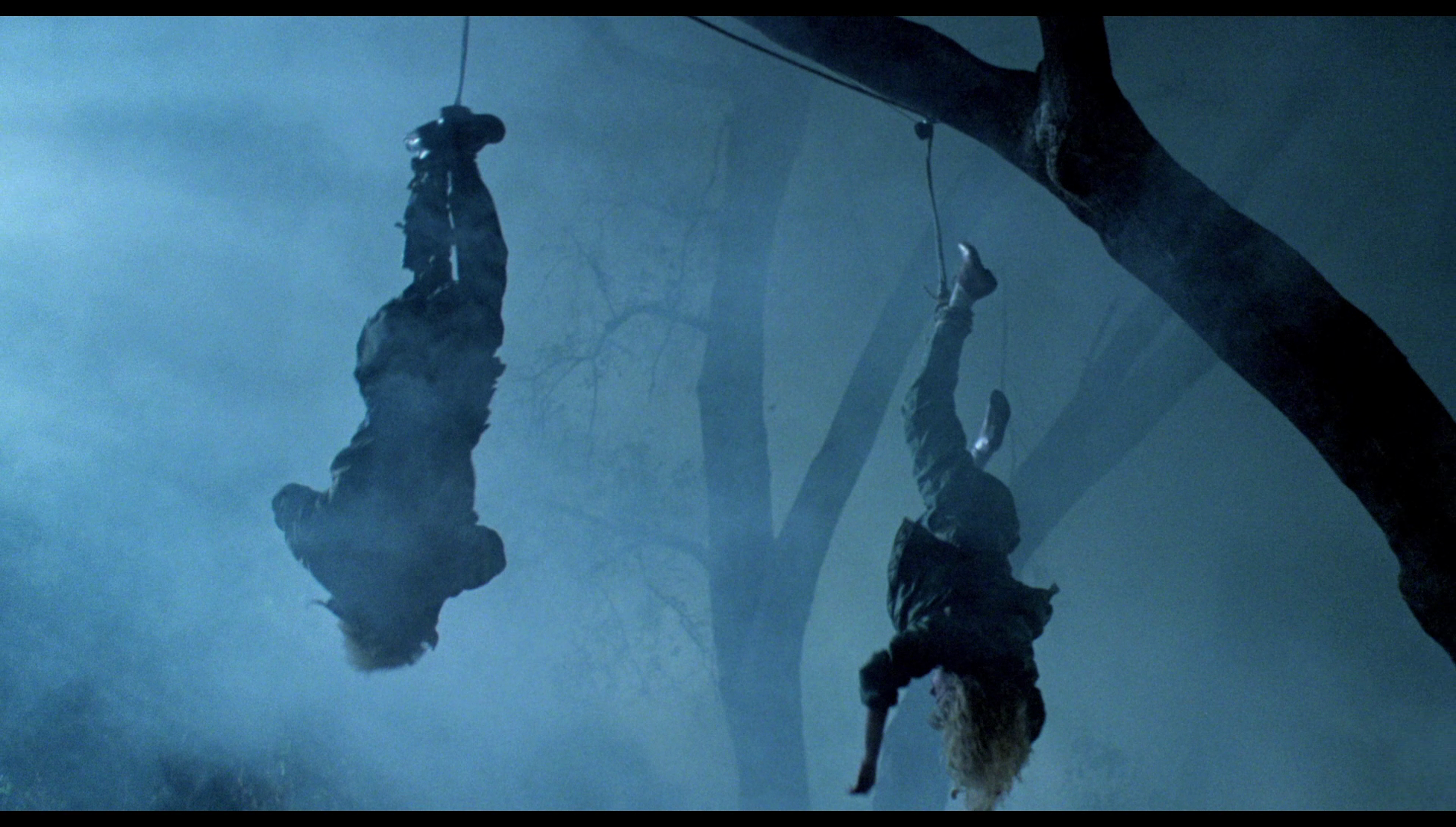
Video
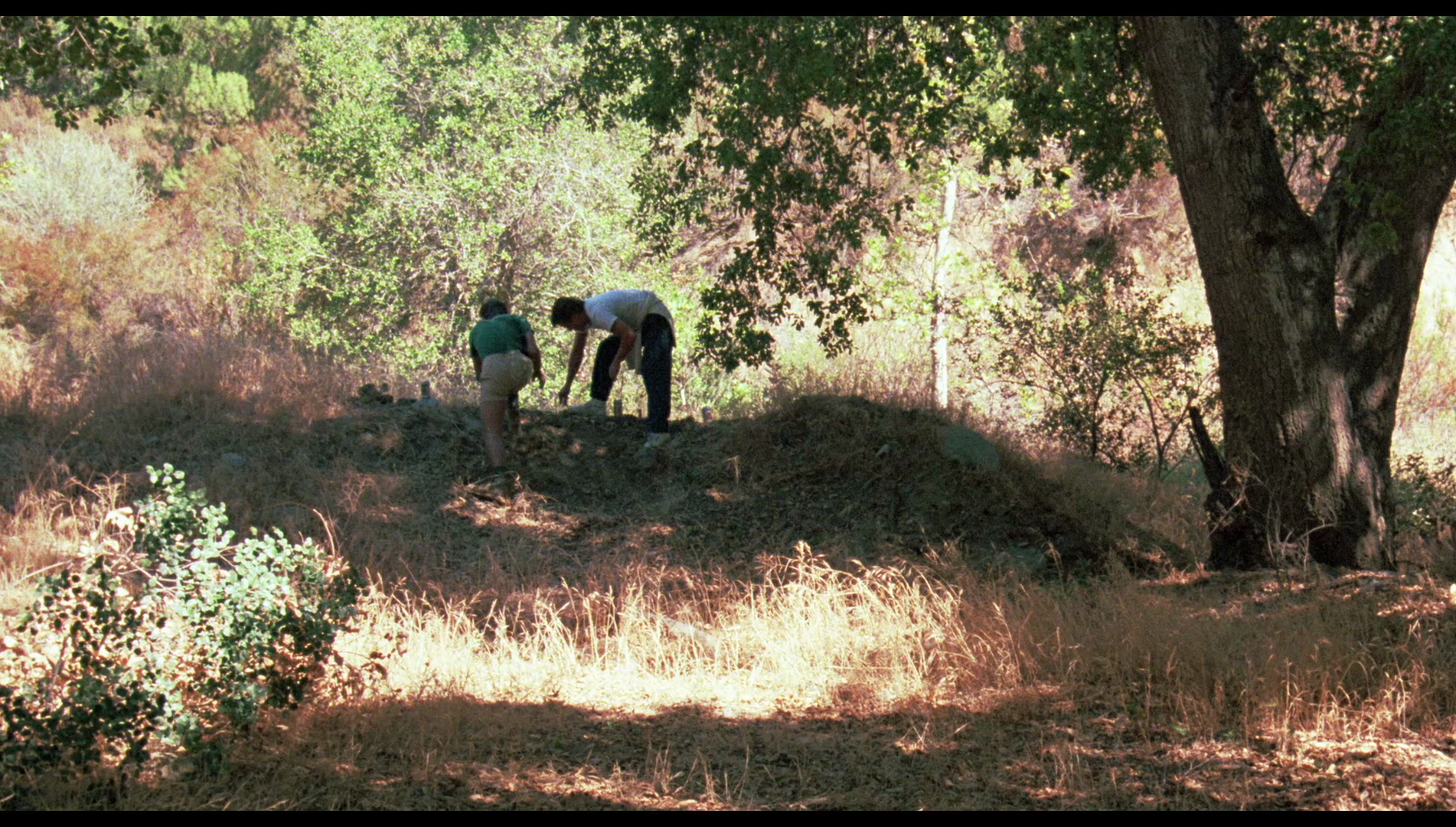 Presented in the film’s intended aspect ratio of 1.85:1, this 1080p presentation of The Zero Boys uses the AVC codec and takes up a little under 24Gb of space on the disc. The film is uncut and runs for 88:54 mins. (The cuts imposed by the BBFC for the film’s previous VHS release in 1986 have been waived here.) The presentation is based on a new 2k restoration that has been approved by Mastorakis himself. The image is clean, free of damage and debris, and displays a very good level of detail. Contrast levels are good and offer definition within the image, with defined mid-tones and balanced shadow detail. There are a handful of shots in which the highlights look rather ‘hot’, but that seems to be a product of the original photography: one such scene involves the Zero Boys picnicking in the woods, covered by the shade provided by the trees whilst Jamie’s face is (rather oddly) bisected by the edge of this shadow, harsh sunlight streaming onto the upper half of her head. The shot is exposed for the shadows, and this juxtaposition between two exposure values within the same frame seems like a curious decision on the part of the film’s original cinematographer; the fact that in a shot such as this, the highlights seem rather ‘hot’ is a product of the decision during production to expose for the shadows whilst also allowing harsh sunlight into the frame. Presented in the film’s intended aspect ratio of 1.85:1, this 1080p presentation of The Zero Boys uses the AVC codec and takes up a little under 24Gb of space on the disc. The film is uncut and runs for 88:54 mins. (The cuts imposed by the BBFC for the film’s previous VHS release in 1986 have been waived here.) The presentation is based on a new 2k restoration that has been approved by Mastorakis himself. The image is clean, free of damage and debris, and displays a very good level of detail. Contrast levels are good and offer definition within the image, with defined mid-tones and balanced shadow detail. There are a handful of shots in which the highlights look rather ‘hot’, but that seems to be a product of the original photography: one such scene involves the Zero Boys picnicking in the woods, covered by the shade provided by the trees whilst Jamie’s face is (rather oddly) bisected by the edge of this shadow, harsh sunlight streaming onto the upper half of her head. The shot is exposed for the shadows, and this juxtaposition between two exposure values within the same frame seems like a curious decision on the part of the film’s original cinematographer; the fact that in a shot such as this, the highlights seem rather ‘hot’ is a product of the decision during production to expose for the shadows whilst also allowing harsh sunlight into the frame.
In this presentation, the film’s colour palette is communicated nicely: in the earlier sequences, set during daylight (and contrasted with the night-time focus of the film’s later sequences) the image is bleached under bright sunlight but offset by primary colours (reds and greens, primarily). Later sequences set during the nighttime feature an abundance of blue tones. These are all handled very well in this presentation. There are a handful of scenes featuring fog and smoke effects at night in which the grain seems rather ‘clumpy’ in places, but this aside the presentation retains the structure of 35mm film. (Some of the nighttime sequences feature pronounced grain, clearly a product of the low-light shooting butting heads against the speed of the colour film stock used to shoot the picture.) In sum, it’s a pleasing presentation of the film.  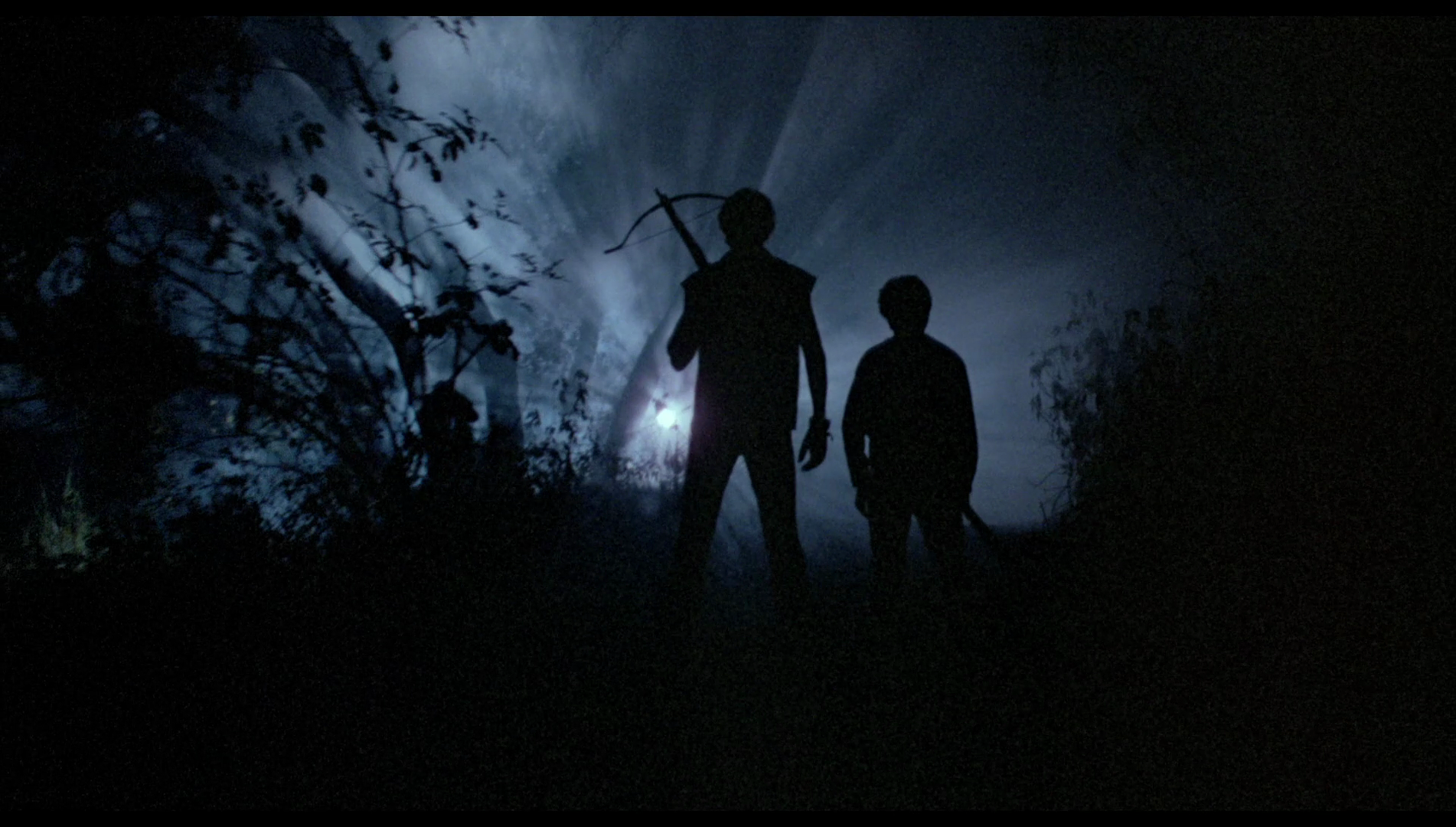 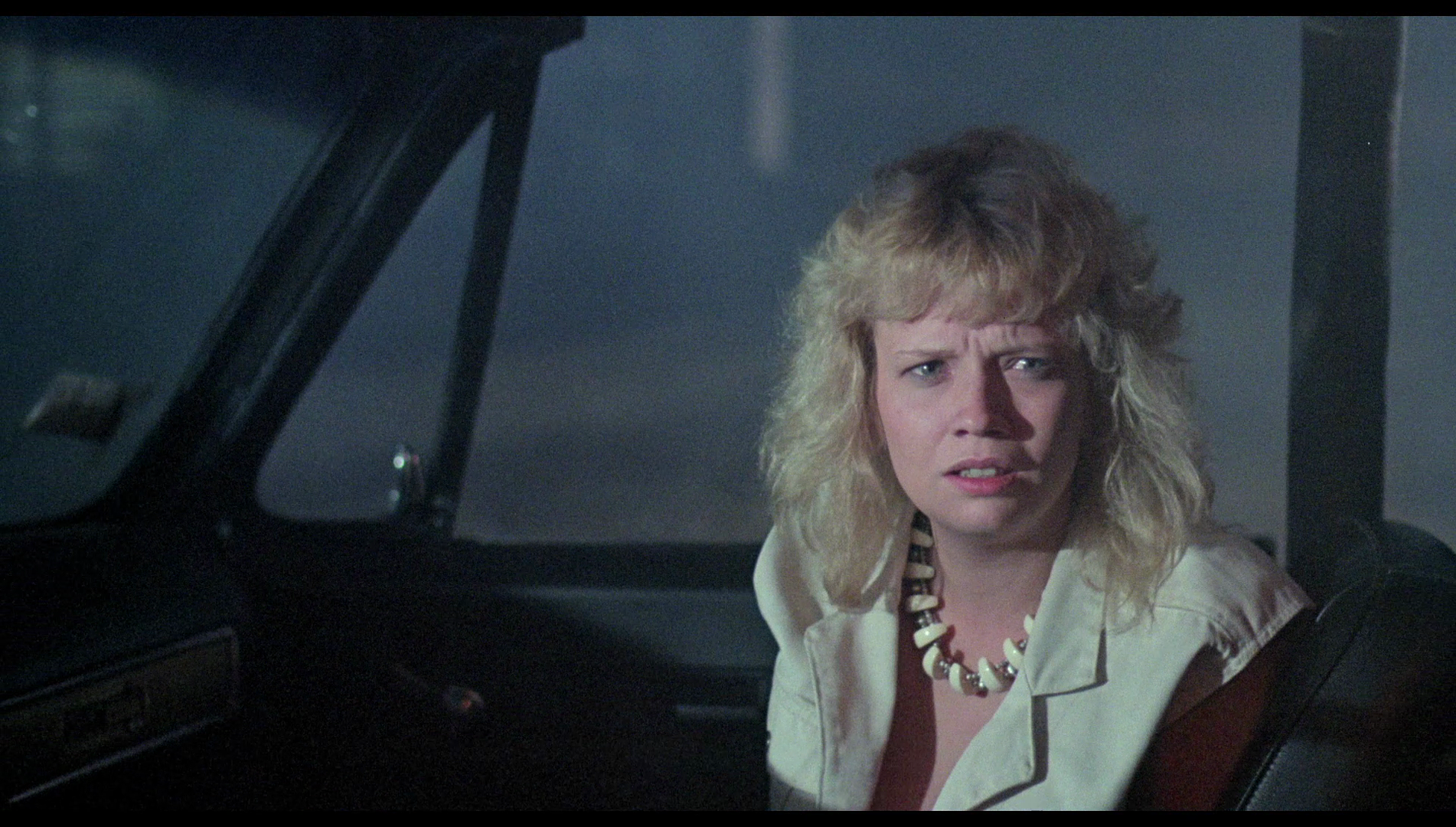
Audio
Audio is presented via a LPCM 2.0 track, which is clean and rich. Bass stands out rather well, and there’s effective sound separation (especially involving the film’s score) that offers an immersive soundscape. Optional English subtitles for the Hard of Hearing are included. These are free from errors and easy to read.
Extras
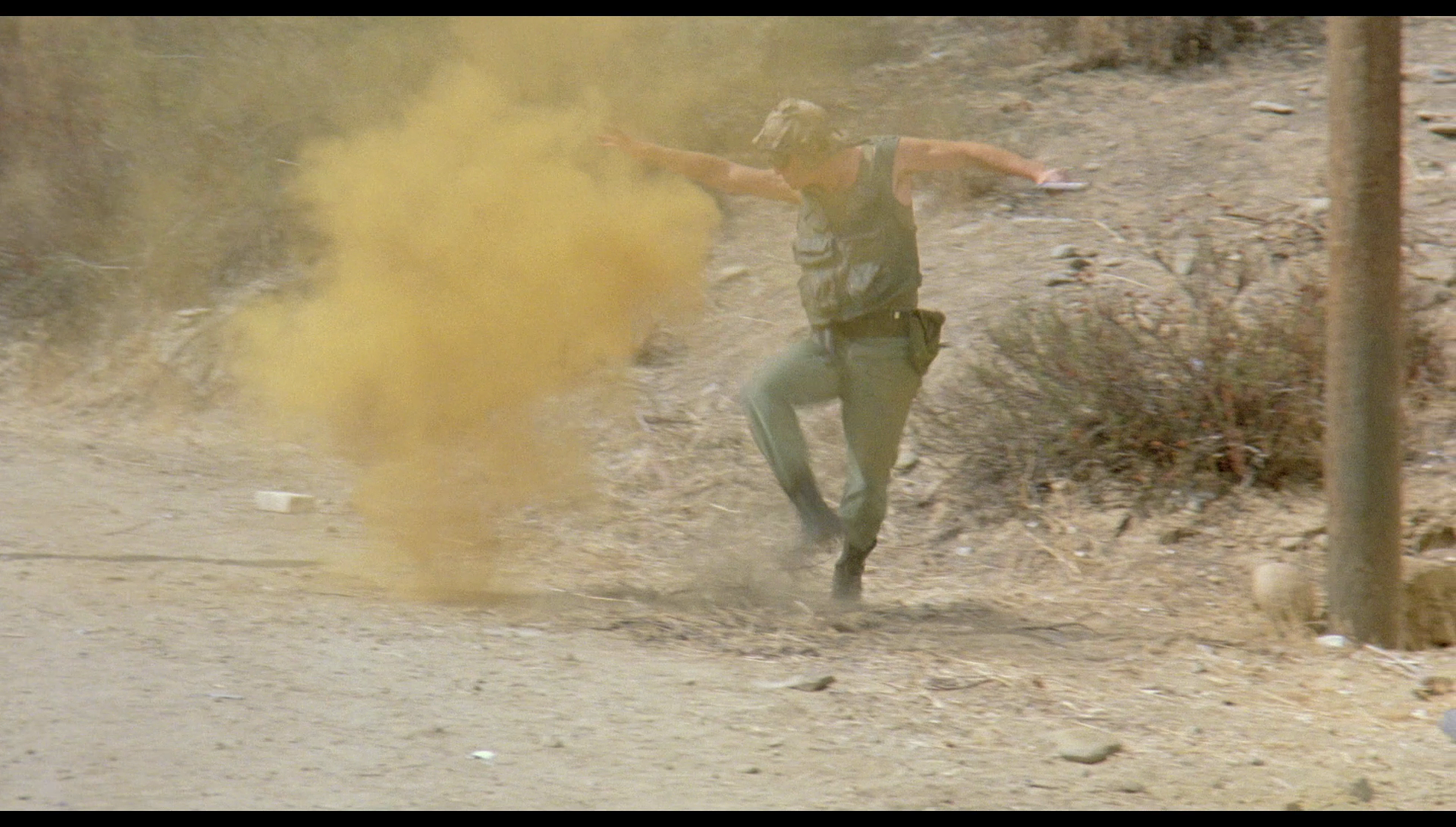 The disc includes: The disc includes:
- an audio commentary with actress Kelli Maroney, moderated by Chris Alexander. In this commentary, Alexander (the editor of Fangoria) speaks with Maroney, who plays Jamie in the film. It’s a lively, fun commentary. The pair begin by discussing the film’s music by Hans Zimmer and the way in which the picture was marketed as other than a horror picture. The film’s references to action films are discussed, as are Maroney’s other roles in Slayground and Fast Times at Ridgemont High. Maroney and Alexander joke about Mastorakis’ reputation as a tough director to work for; Alexander tries to cajole Maroney into criticising Mastorakis, but Maroney is very gracious about the whole experience and her apparently fractious working relationship with the director. - Nico Mastorakis on… Nico Mastorakis (27:48). Here, in a newly-filmed piece, the director Mastorakis interviews himself. It’s a bizarre, eccentric piece. Mastorakis discusses the process of getting the film into production and the casting decisions. He reflects on Hans Zimmer’s music for the film and talks about the careers of the crew and actors involved in the film since they worked on The Zero Boys. It’s a strange interview, as eccentric as Mastorakis appears to be, but informative and fun to watch. - Zero Girl (8:20). In a new interview, Kelli Maroney reflects on her involvement in the film. She discusses working with Mastorakis and his apparently coarse and abrasive manner of addressing the cast and crew. - Blame it on Rio (8:29). Actress Nicole Rio discusses her background in showbusiness and her beginnings as an actress. She talks about the shooting of some of the scenes in the film, including the memorable scene in which Rio’s character is terrorised by a rattlesnake. She also reflects on the response to the film, suggesting that ‘it was different, it wasn’t just a basic slasher movie’. She also discusses her feelings with regards the lasting ‘cult’ appeal of films like The Zero Boys. - Music Videos: ‘Main Theme’ (2:09); ‘The Spelling of S.U.S.P.E.N.S.E.’ (1:09). These are simply montages of clips from the film accompanied by sections of Zimmer’s score. The latter features some snazzy video editing and desaturates the film’s photography, presenting it in monochrome. - Trailer (3:09). - Stills Gallery (1:24). Retail copies feature reversible sleeve artwork and a booklet containing images from the film and a new piece about the film by critic James Oliver.
Overall
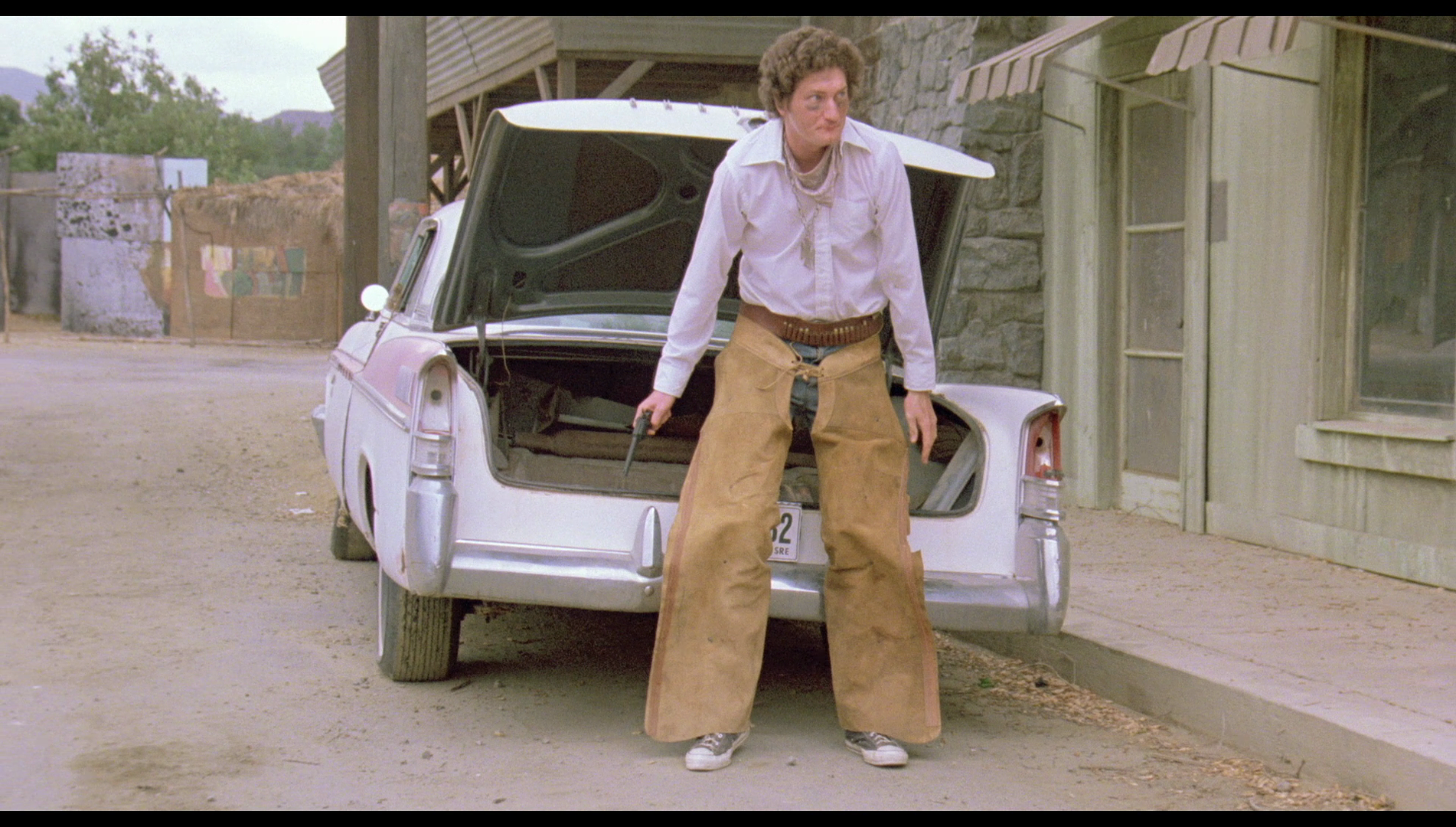 The Zero Boys is a strange mish-mash of action films like Rambo: First Blood, Part II and bodycount/slasher pictures such as The Burning. Like some of Mastorakis’ other films (for example, his infamous Island of Death, 1978 – see our review of Arrow’s release of that title here), it strives to say something about society amidst the carnage – and there’s a clear sense within the film that through the (mis)adventures of the titular Zero Boys, and the film’s structuring opposition between the wargames at the start of the picture and the ways in which the Zero Boys are hunted by the rednecks during the second half of the film, Mastorakis is reflecting on mediated violence and its relationship with ‘the real thing’. It’s a fun film, albeit one with elements that are familiar from many other pictures, that doesn’t outstay its welcome. Arrow’s Blu-ray release of the film contains a solid presentation of the main feature, clearly head and shoulders above the film’s previous home video releases, and some excellent contextual material, including the engaging commentary track with Kelli Maroney and an eccentric and informative interview with Mastorakis (conducted by, well, himself). The Zero Boys is a strange mish-mash of action films like Rambo: First Blood, Part II and bodycount/slasher pictures such as The Burning. Like some of Mastorakis’ other films (for example, his infamous Island of Death, 1978 – see our review of Arrow’s release of that title here), it strives to say something about society amidst the carnage – and there’s a clear sense within the film that through the (mis)adventures of the titular Zero Boys, and the film’s structuring opposition between the wargames at the start of the picture and the ways in which the Zero Boys are hunted by the rednecks during the second half of the film, Mastorakis is reflecting on mediated violence and its relationship with ‘the real thing’. It’s a fun film, albeit one with elements that are familiar from many other pictures, that doesn’t outstay its welcome. Arrow’s Blu-ray release of the film contains a solid presentation of the main feature, clearly head and shoulders above the film’s previous home video releases, and some excellent contextual material, including the engaging commentary track with Kelli Maroney and an eccentric and informative interview with Mastorakis (conducted by, well, himself).
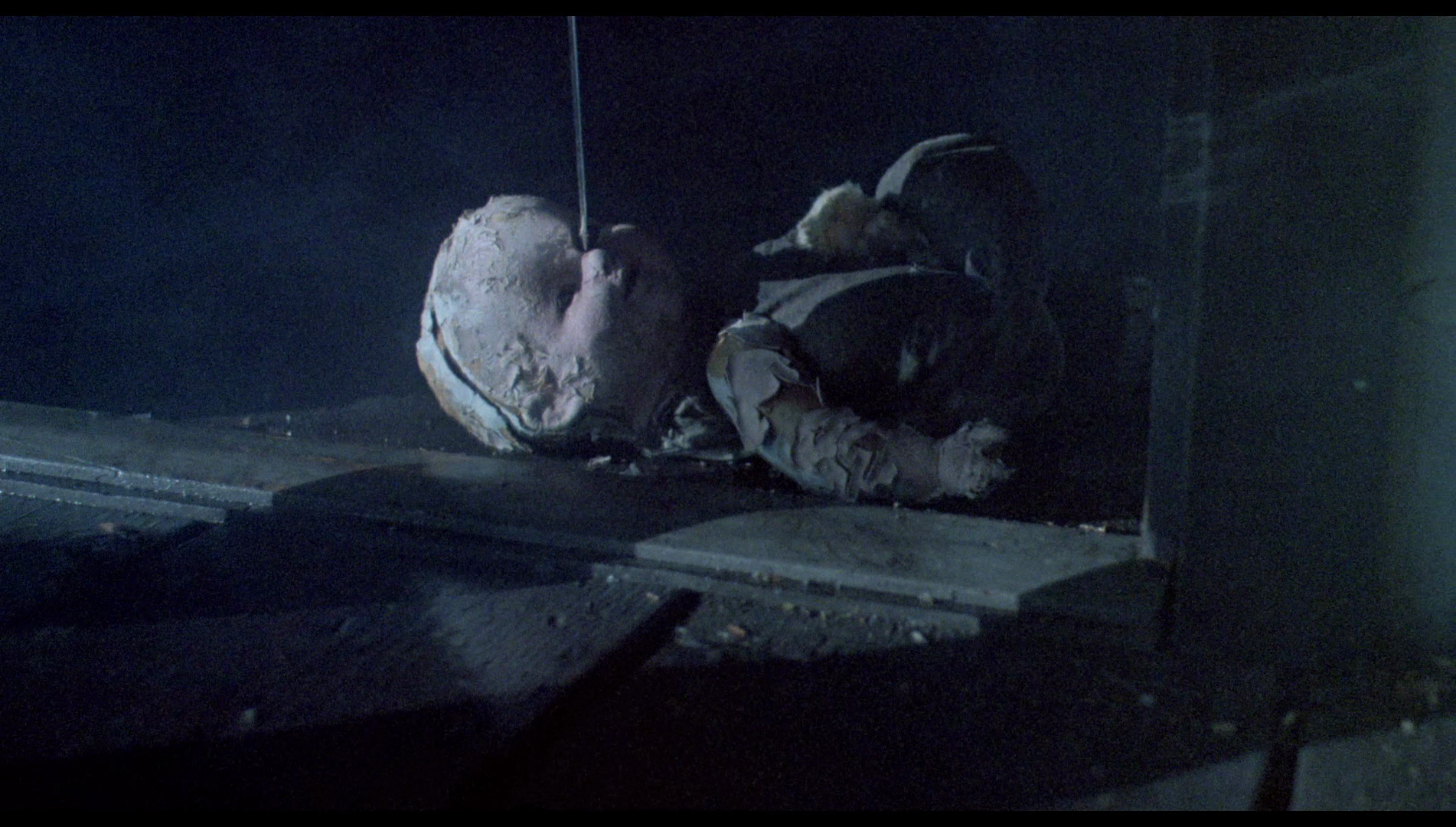
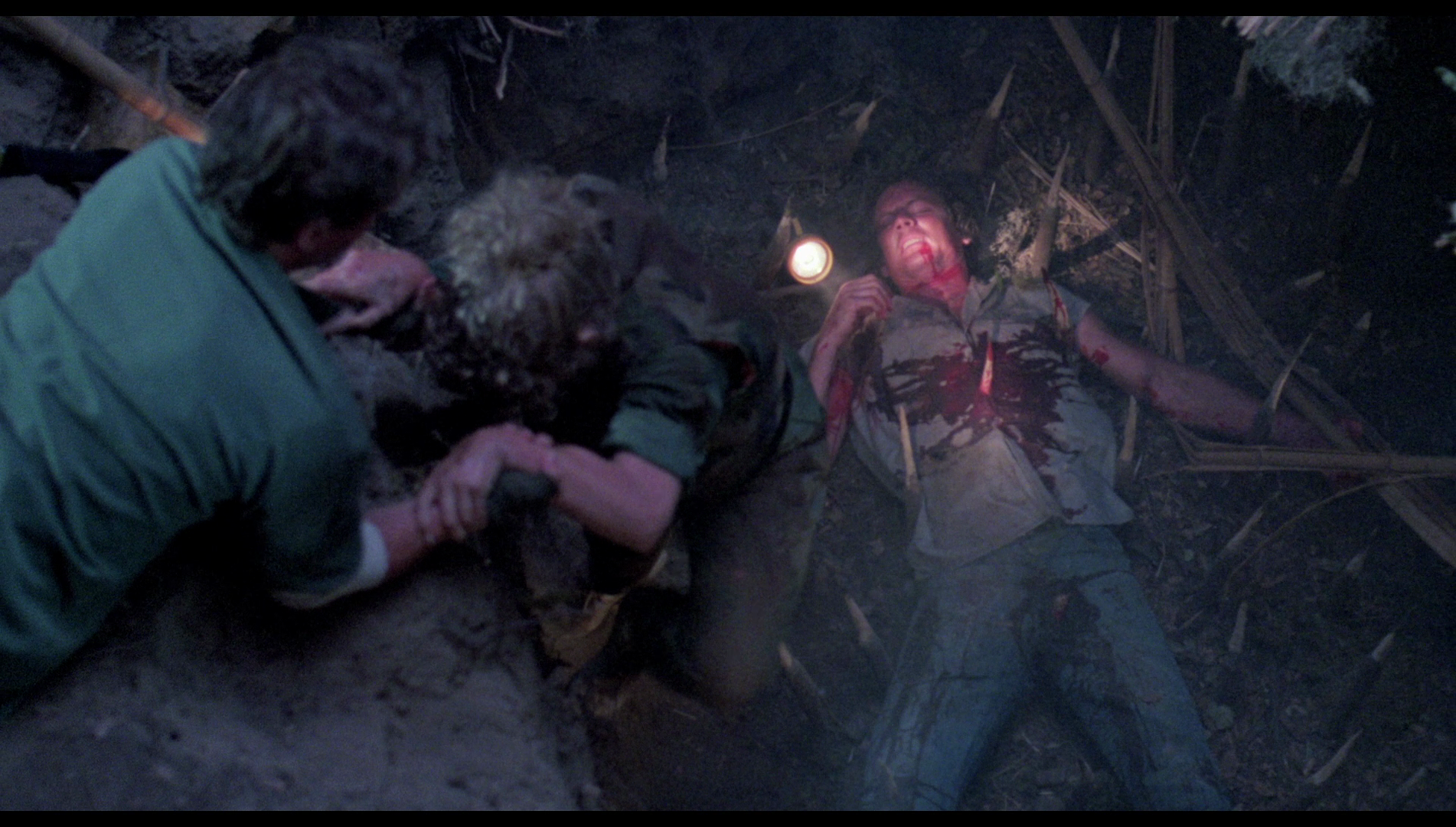

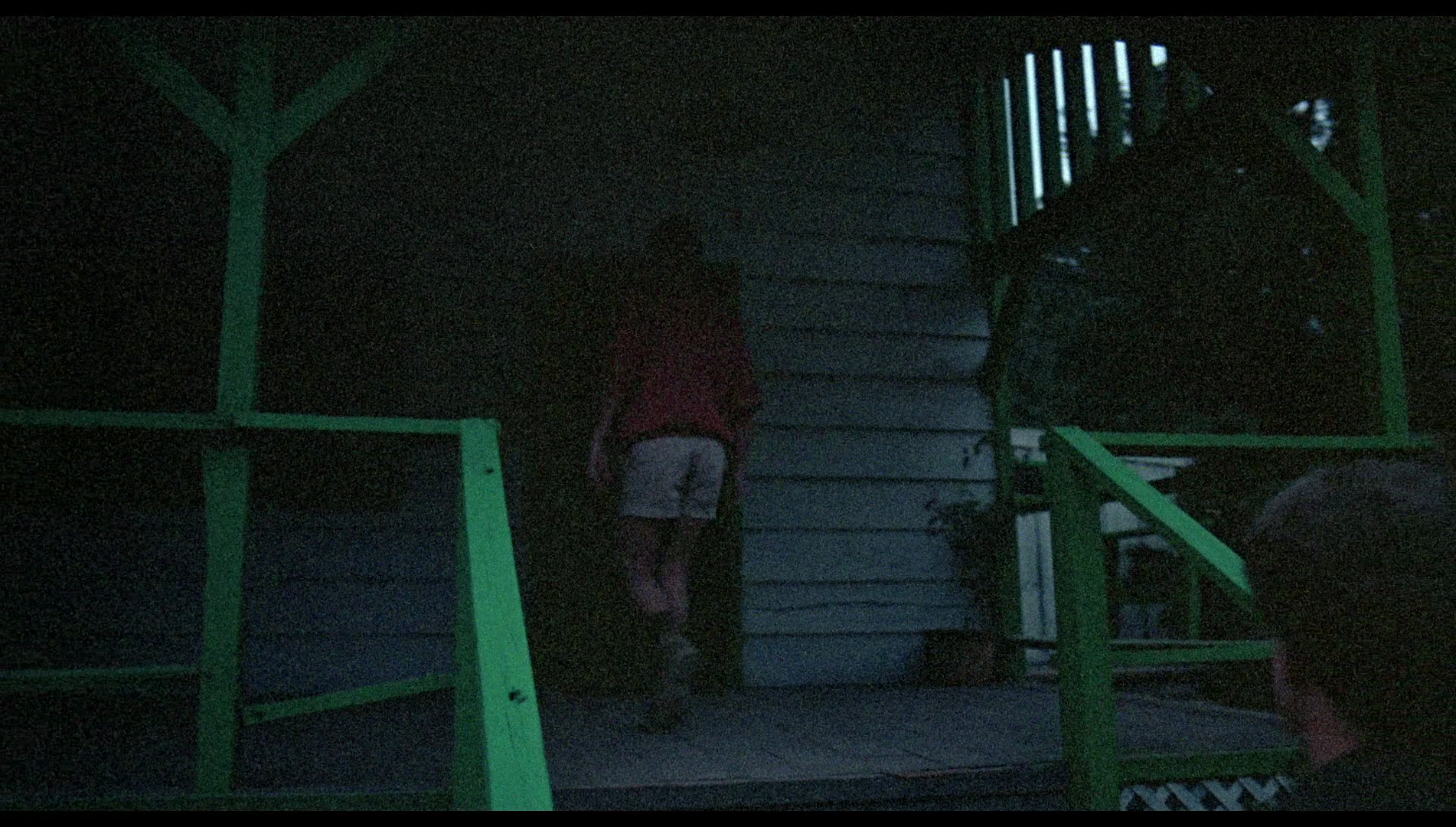
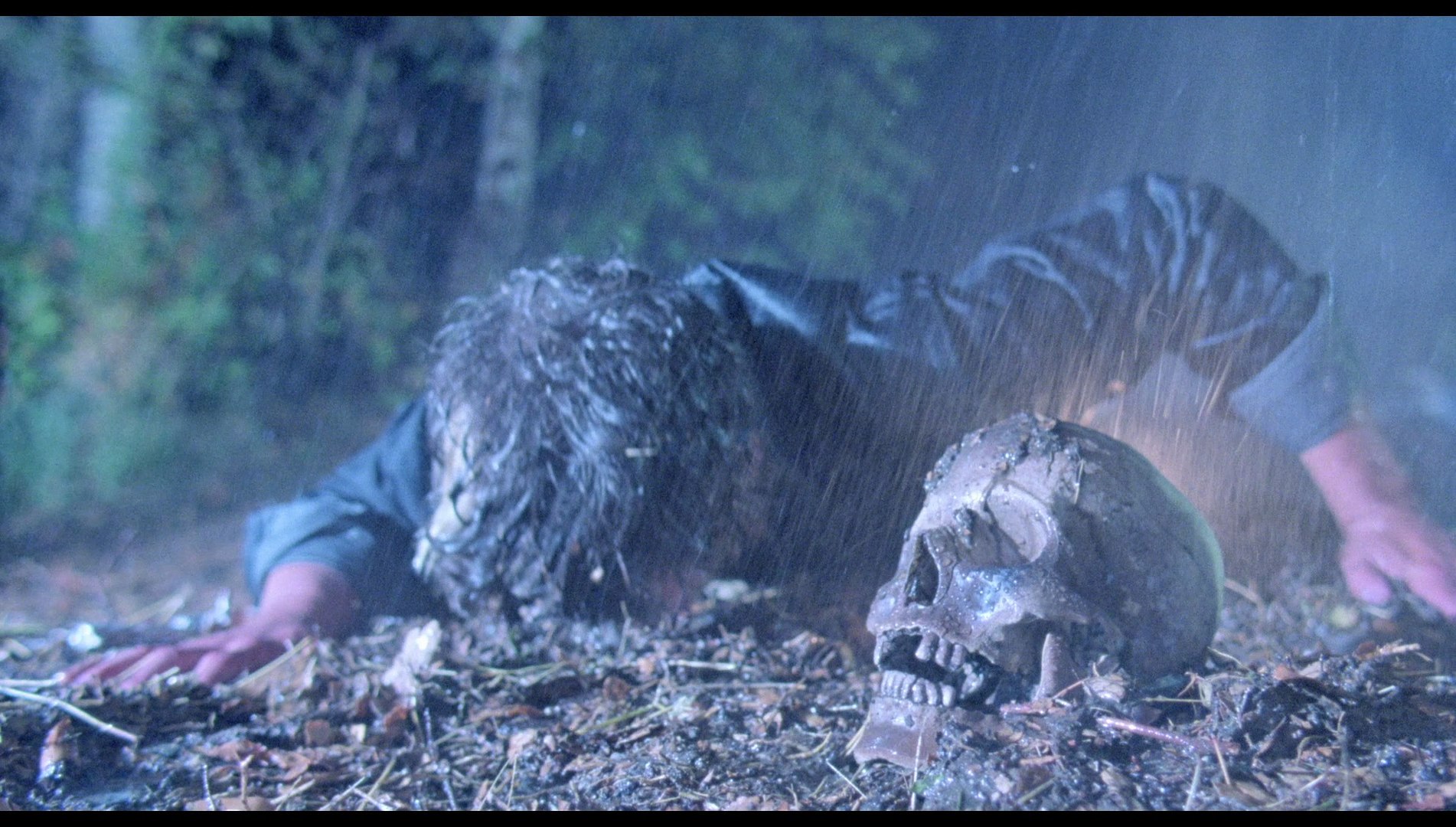
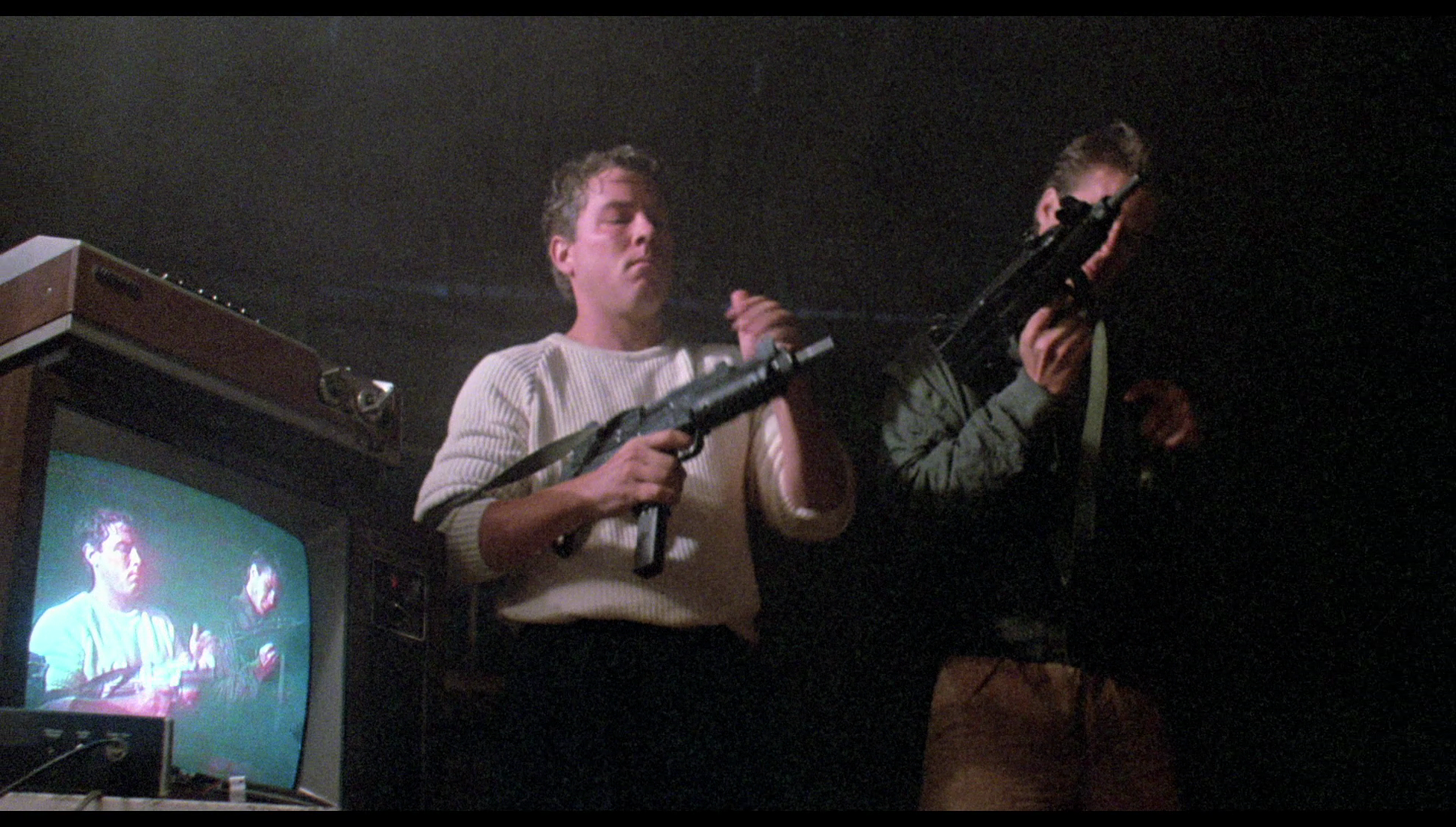
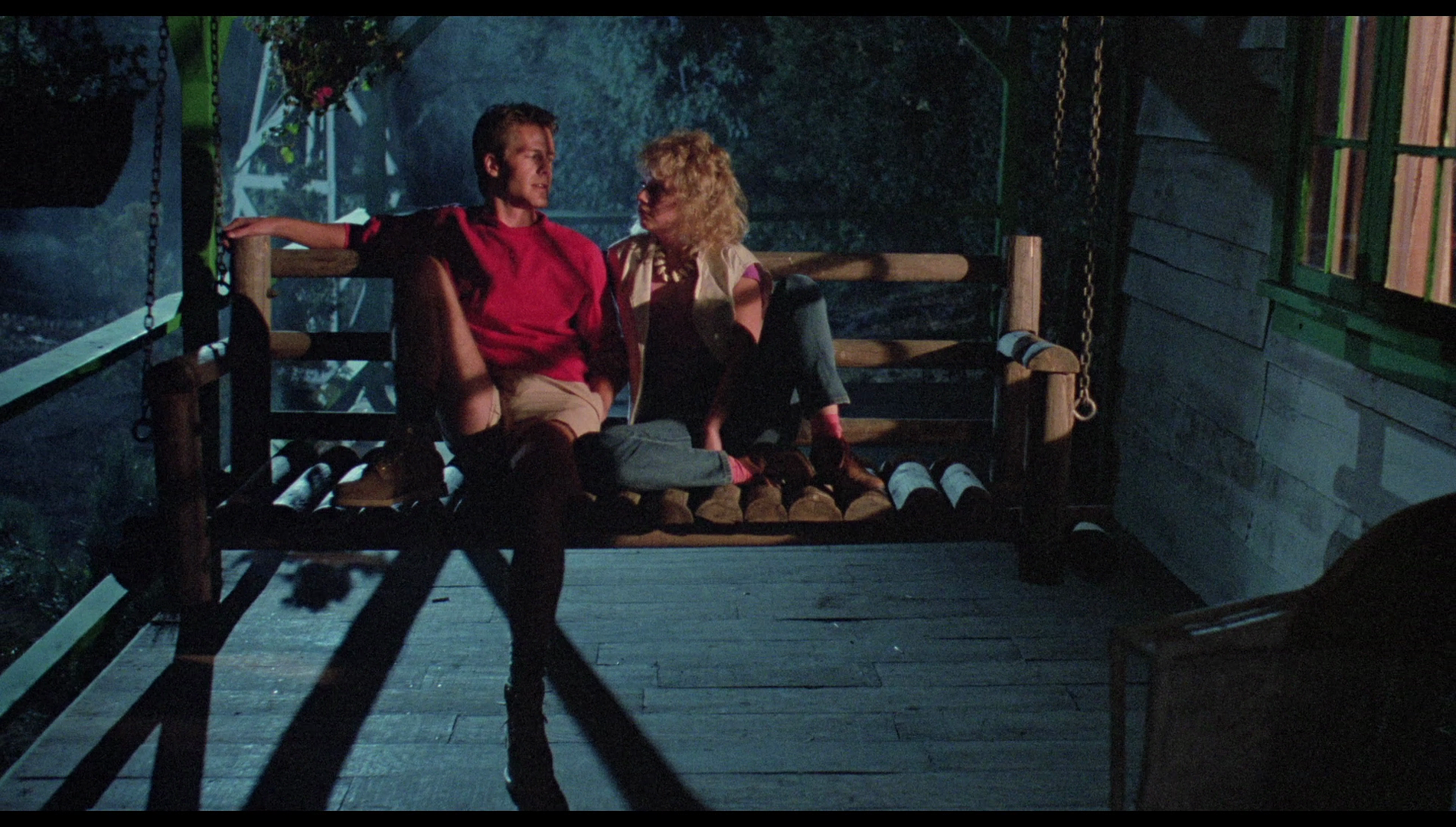
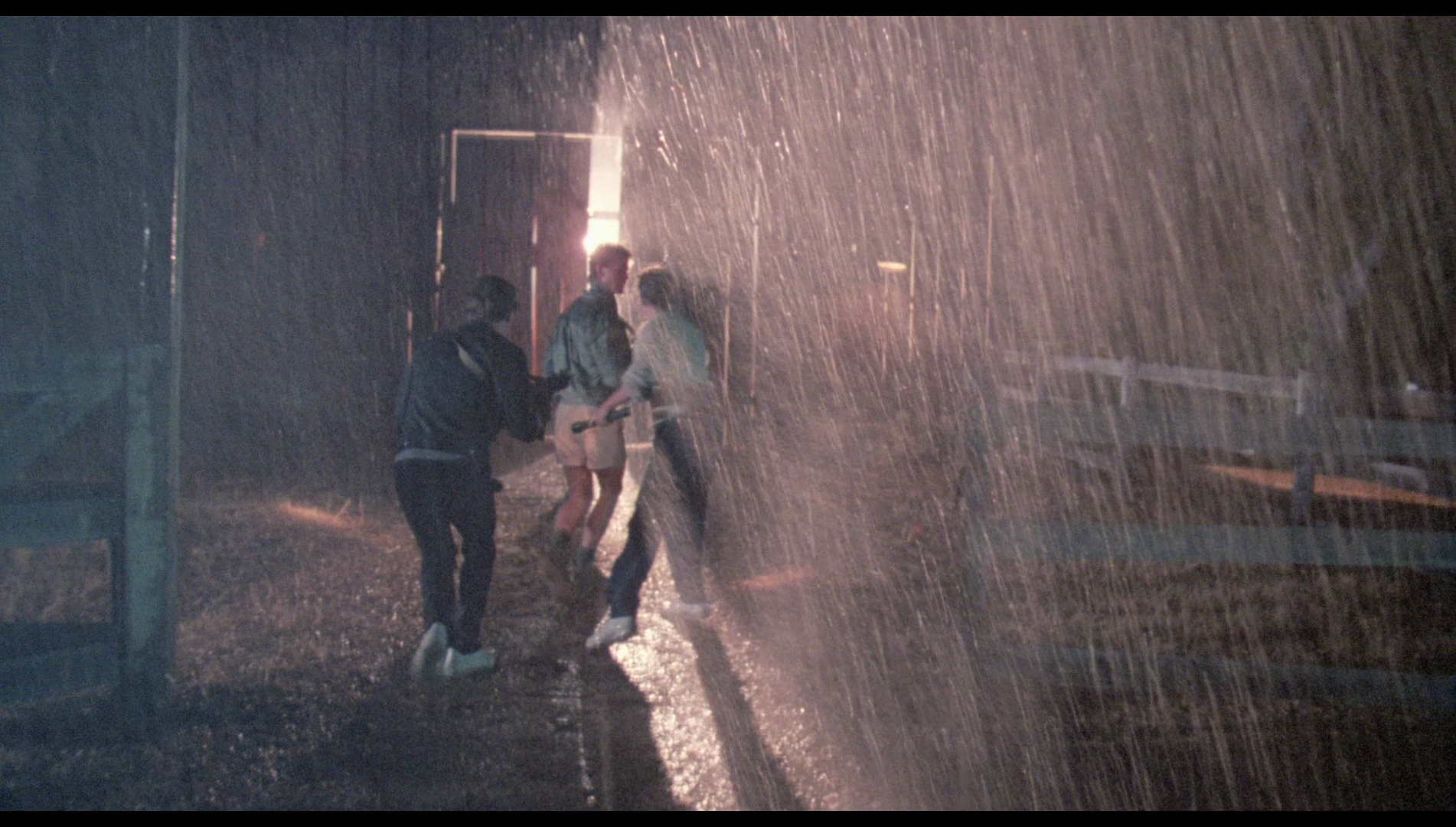

|
|||||

|